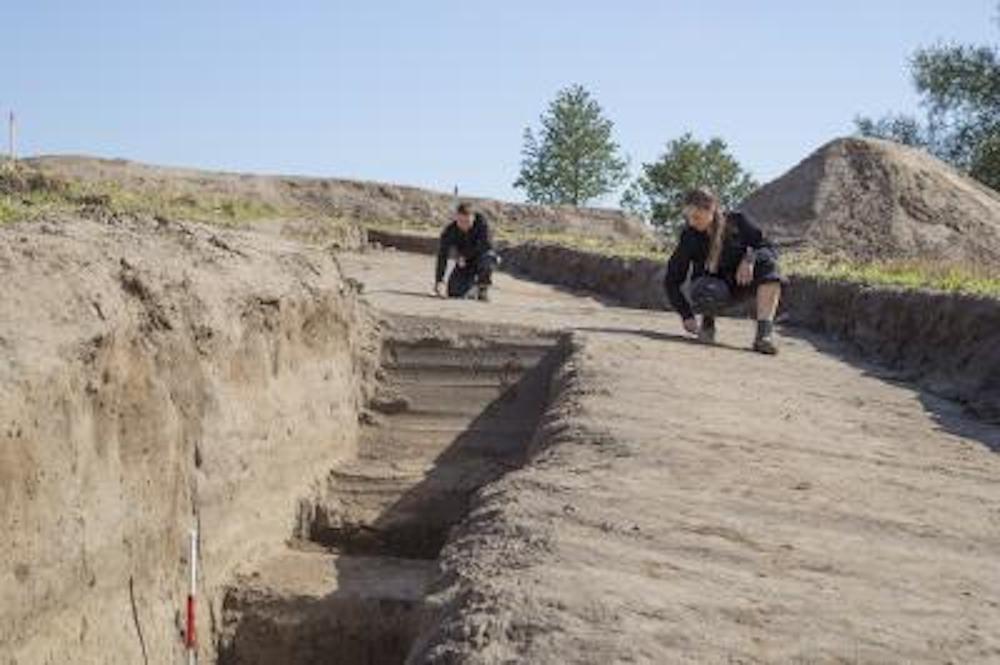Ancient Viking Fortress Reveals 'Fierce Warriors' Were Decent Architects

The Vikings weren't just a fierce band of warriors with cool headgear. A new archaeological discovery in Denmark suggests that these notorious fighters were also decent builders.
Archaeologists on the Danish island of Zealand recently discovered a Viking fortress that likely dates back to the 10th century A.D. It's the first time in 60 years that such a fortress has been unearthed in Denmark, the researchers said.
"The Vikings have a reputation as [fierce Norse warriors] and pirates. It comes as a surprise to many that they were also capable of building magnificent fortresses," Søren Sindbæk, a professor of medieval archeology at Aarhus University in Denmark, said in a statement. The discovery of the new fortress provides an opportunity for archaeologists to gain even more knowledge about Viking wars and conflicts, Sindbæk added. [Fierce Fighters: 7 Secrets of Viking Seamen]
Prior to this latest discovery, three other Viking fortresses were discovered in Denmark. These structures, named Fyrkat, Aggersborg and Trelleborg, are known collectively as the "Trelleborg" fortresses.
"We recognize the 'Trelleborg' fortresses by the precise circular shape of the ramparts and by the four massive gates that are directed at the four corners of the compass," said Nanna Holm, curator of the Danish Castle Centre in Denmark, who helped identify the site of the newly unearthed fortress. "Our investigations show that the new fortress was perfectly circular and had sturdy timber along the front. We have so far examined two gates, and they agree exactly with the 'Trelleborg' plan."
The fortress, located south of the capital city of Copenhagen, is huge, Holm said. It spans nearly 476 feet (145 meters) across, longer than 1.5 football fields.
Archaeologists long suspected that a fourth Trelleborg fortress might exist on the island of Zealand, according to Sindbæk, who has studied these structures for years. And the site of Vallø, now part of the Zealand Region on the east coast of Zealand, is an ideal place for the Vikings to have built such a structure, Sindbæk said.
Get the world’s most fascinating discoveries delivered straight to your inbox.
During the 10th century, Vallø marked the spot where two main roads met, Sindbæk said. It also overlooked the Køge river valley, which at that time was a navigable fjord and one of the best natural harbors on the island, Sindbæk added.
Suspecting a fortress might be buried beneath Vallø, the team of archaeologists used advanced laser and magnetic tools to determine the structure's exact location. The team included Helen Goodchild from the University of York, in the United Kingdom.
"By measuring small variation[s] in the Earth's magnetism, we can identify old pits or features without destroying anything," Sindbæk said. "In this way, we achieved an amazingly detailed 'ghost image' of the fortress in a few days. Then we knew exactly where we had to put in excavation trenches to get as much information as possible about the mysterious fortress."
Once the team had uncovered the hidden structure, Holm said the researchers noticed a telltale sign that the fortress they had suspected was indeed buried there: At the north end of the site, the team found massive, charred oak posts, which the archaeologists said they think were once gates that had been burned down. The team is using radiocarbon dating and dendrochronology, or tree-ring dating, to determine the precise age of the charred wood, an effort that could help archaeologists figure out exactly when the fortress was constructed.
"We are eager to establish if the castle will turn out to be from the time of King Harald Bluetooth, like the previously known fortresses, or perhaps a former king's work," said Holm. "If we can establish exactly when the fortress was built, we may be able to understand the historic events which the fortress was part of."
Follow Elizabeth Palermo @techEpalermo. Follow Live Science @livescience, Facebook & Google+. Original article on Live Science.


